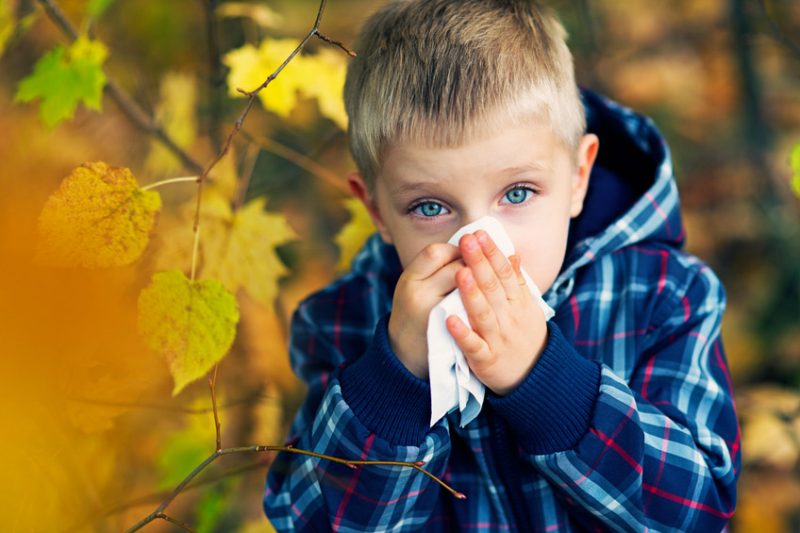Mold allergies also are prevalent in the fall as molds thrive in warm, moist environments, such as under piles of fallen leaves.
Because September is the start of cold and flu season, respiratory virus symptoms can often be mistaken for allergies.
If fall allergies are the cause of your child’s runny nose, sneezing, coughing, watery eyes, or itchy eyes and nose, monitor pollen counts, so you can limit time spent outdoors when counts are high. Local news programs and online news and weather sites are good sources for area pollen counts. Also, keep in mind windy days can be especially bad.
To manage your child’s fall allergy symptoms, our allergists recommend these 4 tips:
- When reasonable, stay indoors during higher pollen count days. Consider having your child shower after spending prolonged periods outdoors, which can wash away some of the pollen.
- Keep windows closed and run the air conditioning.
- Talk to your doctor about using an over-the-counter long-acting antihistamine or nasal spray to manage symptoms. Some medications may cause drowsiness or should not be used with other medical conditions, so ask your doctor for a recommendation.
- If symptoms persist, talk to your doctor about a referral to an allergist who can determine if your child is the right candidate for allergy shots, a form of treatment known as immunotherapy. While immunotherapy doesn’t cure allergies, over time it can lessen the frequency and severity of symptoms.
If you have concerns about whether your child might have allergies, contact your pediatrician. If you need a pediatrician, visit our Akron Children’s Pediatrics page.











